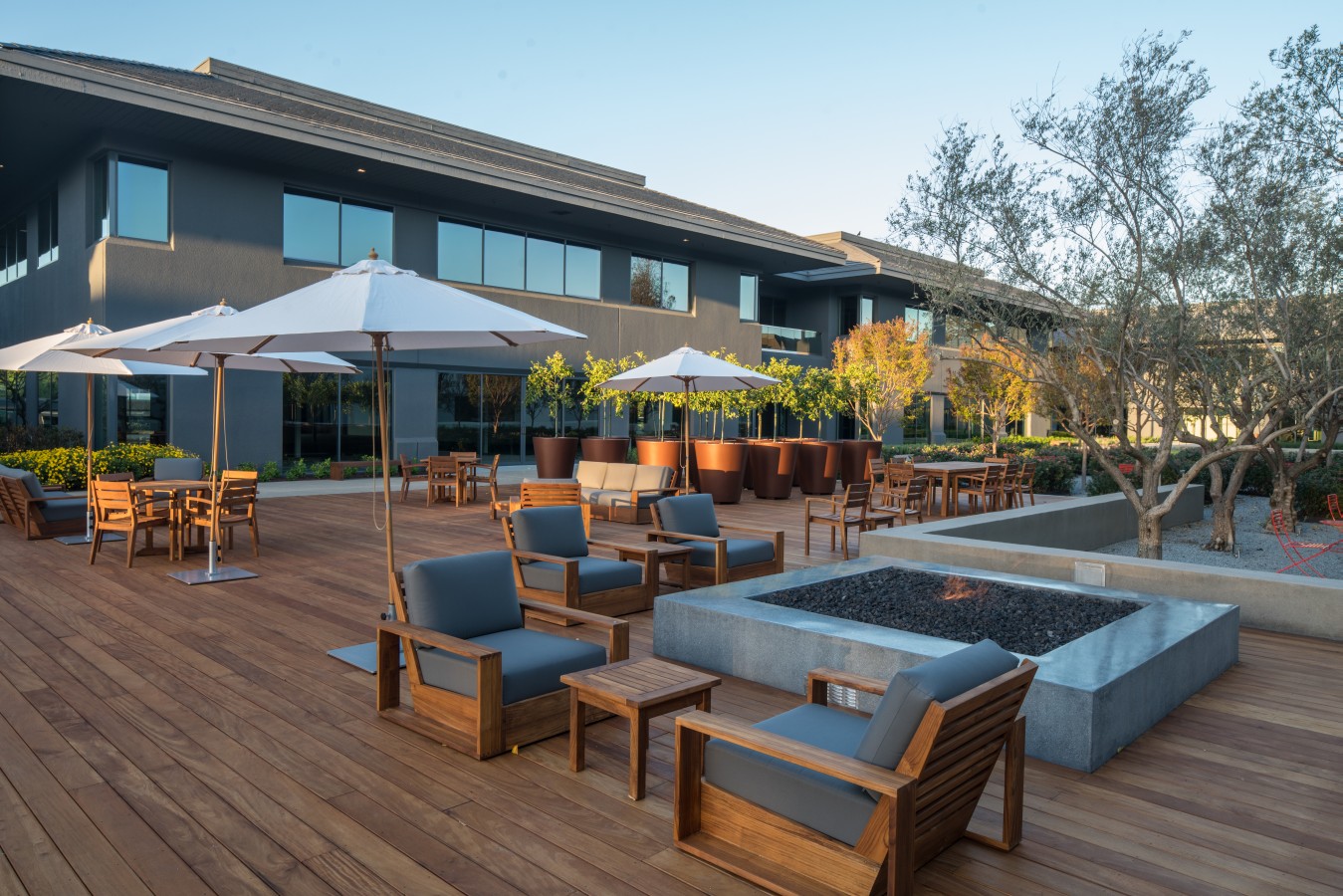
Gensler – Assembly North First
As we look to 2021, many companies are looking to make their buildings healthy, inviting, and productive for their employees to return to work. In the past, outdoor spaces were about socializing and a place of refuge. Now, we can leverage outdoor spaces as part of our workplace. However, despite the many benefits, outdoor workplaces have inherent challenges.
Weather, Wind, and Dust
Most notably, outdoor workplaces are affected by the weather. Coverage from the elements, like sun, rain, and dew, are necessary for a productive and enjoyable workplace. According to Nicholas Samuelson, Principal at The Guzzardo Partnership, Inc., “placing outdoor workplaces in areas with shade from adjacent buildings will help. Also, connecting outdoor to indoor workplaces with NanaWalls provides flexibility in bad weather.” Tree canopies, trellises, and canvas shades can also help solve this challenge and create vibrant, flexible outdoor spaces.
The wind is another concern for several reasons. Wind doesn’t just blow papers around. According to Tim Barnes at Studio G Architects, “wind also impacts the ability to communicate whether in person or when using video/phone conferencing.” Room dividers, like hedges, fences, and walls, can create windbreaks to solve this concern. Tim Barnes says the wind also “blows particles and debris around, which can get in your eyes, and on work surfaces and equipment.” Nicholas Samuelson says, “Well vegetated sites, with a thick mulch layer, can reduce dust. Also, good maintenance with regular sweeping and surface cleaning is important.”

Studio G – Champion Point
Noise and Visual Distractions
Other challenges are external noises and visual distractions. When starting an outdoor workspace project, consider the optimal location for minimizing potential noise and visual distractions. Tim Barnes says, “Noise, like traffic and even adjacent conversations, can negatively affect interactions. And nearby activities within eyesight may also cause a disruption.” We recommend having walls, hedges, fences, and other types of barriers to help with both visual and noise distractions. Nicholas Samuelson suggests, “fountains are a nice way to incorporate white noise” to curb external noises as well.

The Guzzardo Partnership, Inc. – 221 Main
Lighting
Lighting also presents a challenge. Too much light makes screens unreadable. While too little light makes reading and writing difficult. We recommend tree canopies, trellises, and canvas shades to help diffuse the light. Also, Nicholas Samuelson recommends “careful placement of outdoor lights, with even light distribution, to provide a more consistent, glare-free outdoor space.”
Technology
Last but certainly not least, another challenge is technology. You’ll need to consider adding extra power outlets, data availability, video and phone conferencing equipment, and display monitors specifically for outdoor spaces. You can add power-receptacles to entertainment walls, planting areas, and light pole bases. High-speed WIFI can also be incorporated into outdoor spaces easily.

Studio G – The Quad, Lake Park
Conclusion
There are challenges to consider when building outdoor workplaces. However, despite the obstacles, outdoor workplaces are not just viable but can provide a healthy and enjoyable user experience for your employees to return to work. Check back next month as we uncover additional solutions and strategies for building productive outdoor workplaces.
Thought contributors: Tim Barns of Studio G Architects & Nicholas Samuelson of The Guzzardo Partnerships, Inc.

Studio G Architects – Trimble
 (408) 467-1000
(408) 467-1000